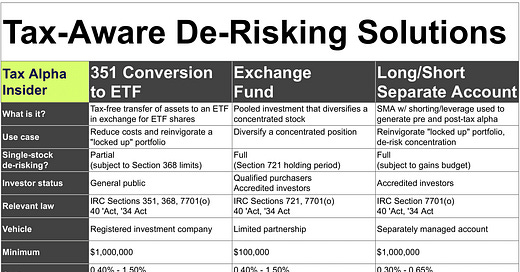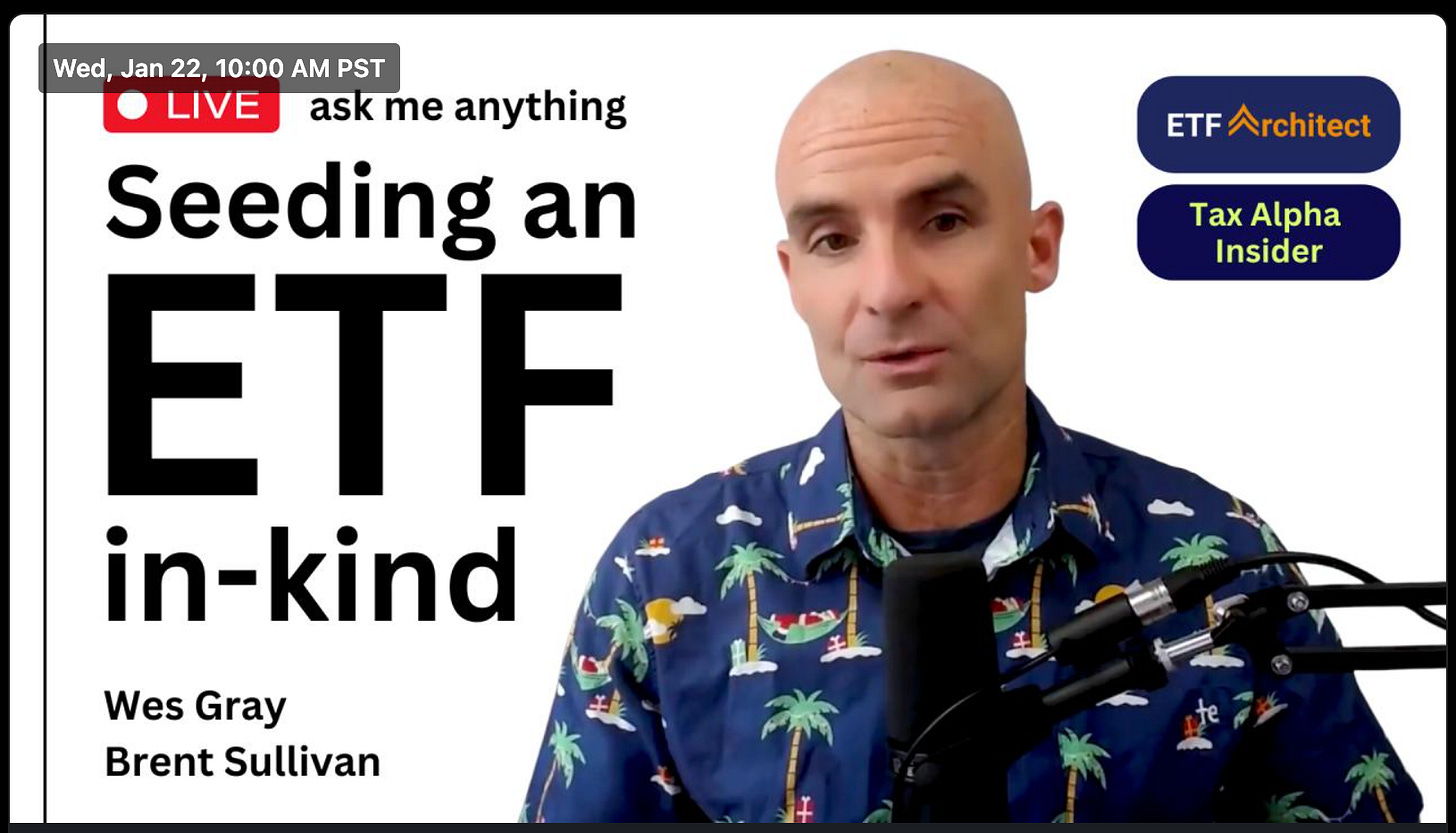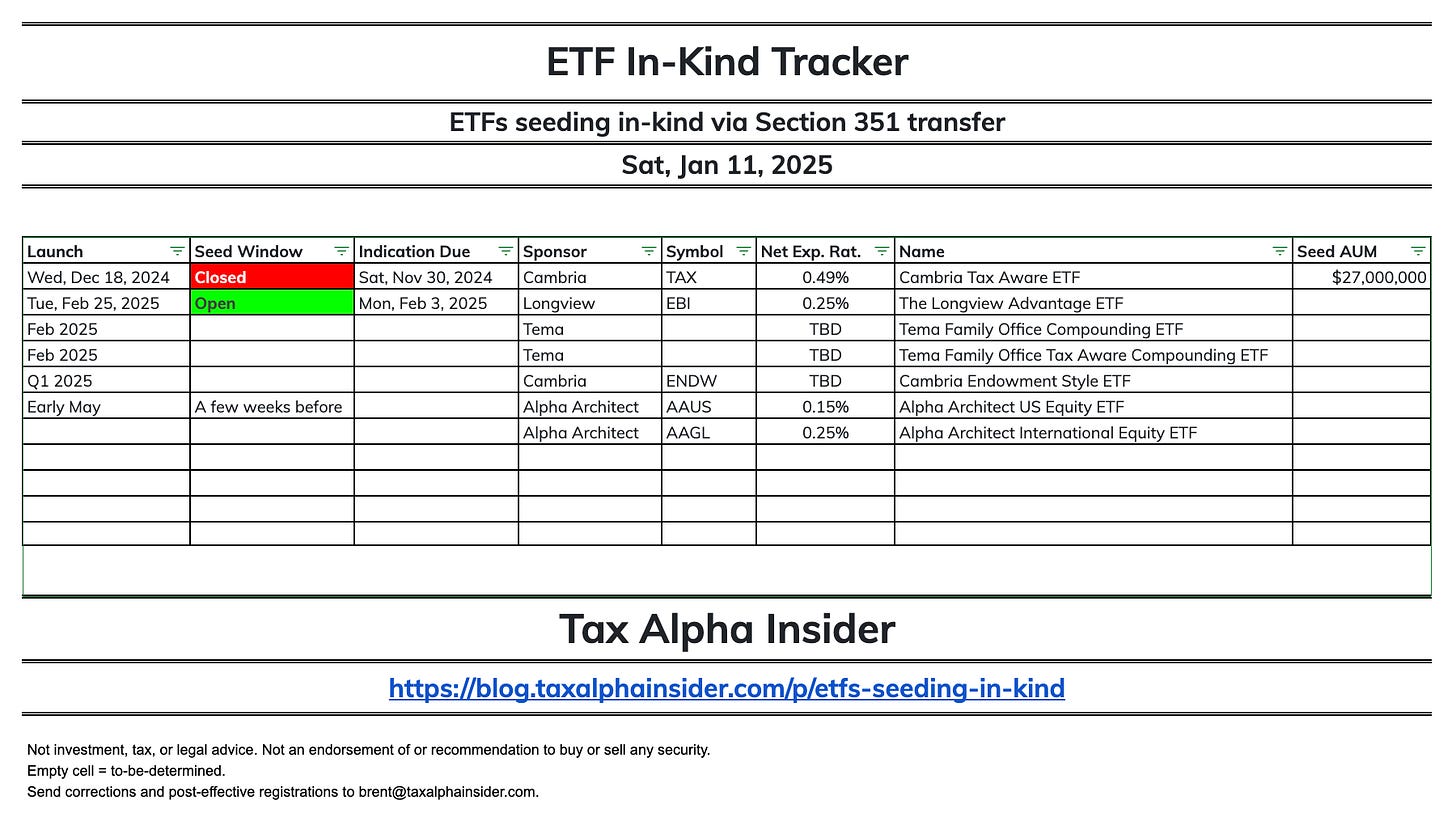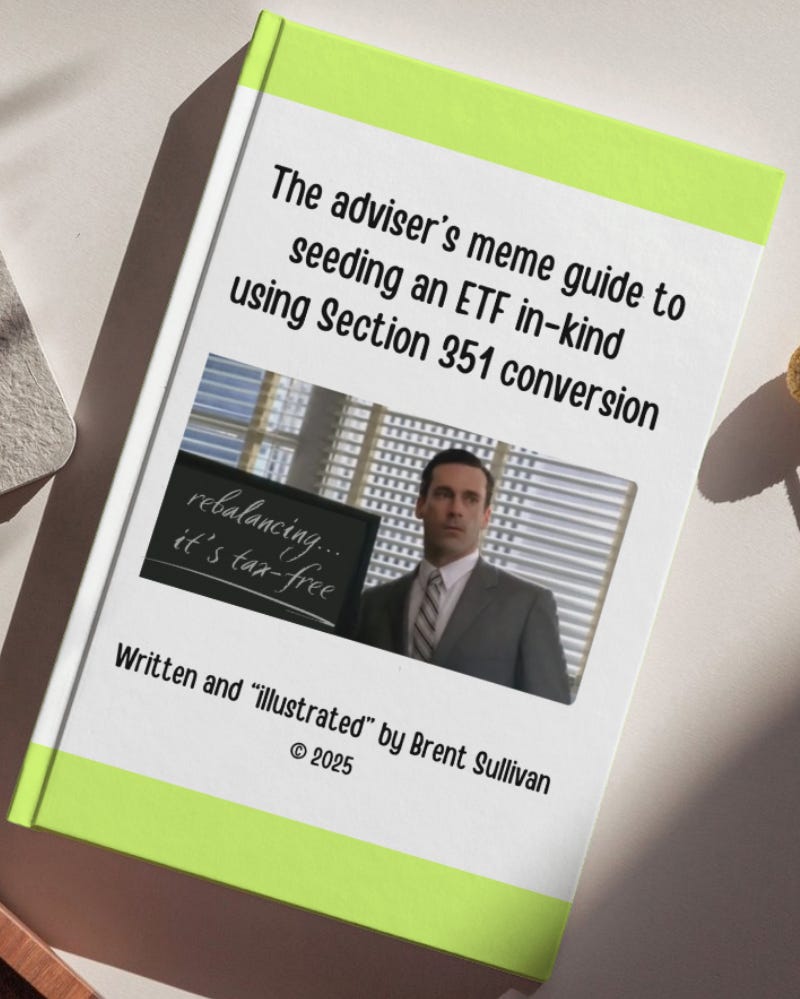Has your direct indexing portfolio become a high-cost index fund?
You have [[[esoteric]]] options
Heads up: LinkedIn Live Ask-Me-Anything with ETF Architect’s Wes Gray on Jan 22.
Register for the event (it’s like watching TV… on LinkedIn)
“What are my options?”
I was informally chatting with the CIO of a family office about a locked-up/ossified direct indexing portfolio he'd overseen for over 15 years.
I mentioned two top-of-mind ideas for tax-aware rebalancing and more tax-loss harvesting:
Long/short overlay (e.g. 130/30 all the way up to 300/200)
Section 351 conversion to a relevant ETF
He wanted the flexibility of the separate account, so the ETF wouldn’t work.
His final question was, "How do exchange funds fit in this whole thing?"
Exchange funds are irrelevant for a locked-up direct index portfolio, but I thought a comparison table might help.
I’ve been slowly adding to this table. This is version 5.
The adviser’s role in the process is pattern matching: roughly knowing how the problems (e.g., locked-up direct index portfolio) map to possible solutions (e.g., long/short overlay).
The next step is weighing the pros/cons of each approach.
It’s work but also a superpower.
ETFs seeding in-kind
I know of a few more ETFs seeding in-kind, but they’re not registered yet.
Did I miss any ETFs coming to market and accepting assets in-kind?
Coming soon…
“The adviser’s meme guide to seeding an ETF in-kind using Section 351 conversion”
I’m looking for feedback providers to clarify the concepts and help the jokes land.
Let me know if you’d like to assist (and get a shoutout in the ack section).







